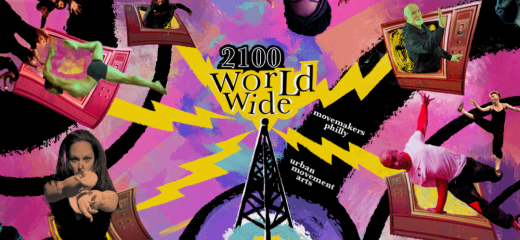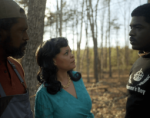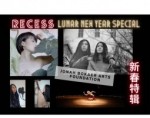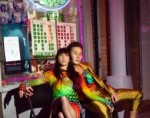
Expanding Beyond Walls: Urban Movement Arts Takes Its Community Online
by Kristi Yeung
During normal times, Urban Movement Arts (UMA) hosts contemporary urban and social dance classes, as well as live performances, from its studio at 2100 Chestnut Street. But now that COVID-19 has forced its physical doors temporarily closed, UMA has taken its programming online. I spoke with Vince Johnson (Founding Director) and Lily Kind* (Associate Director) through Zoom to learn more about the pandemic’s impact on UMA and its sister youth program, MoveMakers.
Kristi Yeung: How have you been handling the disruptions caused by COVID-19?
Vince Johnson: Our first priority was figuring out an alternative for our MoveMakers families. Because we are not able to be with one another in person, there is a concern that the depth of our instruction, as well as the personal elements of our program, could be lost. How do we make the connections necessary to inspire growth? Our approach is similar to that of an online academic course. We have live-streamed classes, supplementary learning tools, and one-on-one consultations. We also post challenges to the students, and they send us videos back. The conversation reflects what happens on TikTok, Instagram, and other social media. We wanted to integrate what families and kids are already engaging with into the online platform. The adult program piggybacks off that but is more live-stream based.
Lily Kind: Our vision for UMA has been that someone comes in for a certain type of dance class and falls in love with another, or discovers a performance style they weren’t aware of, or realizes they’re interested in a new kind of music. We want to maintain that cloud of connection online. It became clear that students needed to see each other in addition to the teacher. The feeling of connection—seeing the other isolated "Wheat Thins" onscreen through Zoom—has been powerful for people. That’s why we went with Zoom over other live-streaming platforms that are one-way. I think seeing each other keeps students coming back to class and inspires them to take new classes that they’ve never taken before. I can see who takes what, and I’m tickled to see who is now ready to do salsa at 9 AM.
VJ: All of this is only feasible because we have a unique team.
LK: One thing that’s really special about our team is that we’re all dance artists. The production skills and problem solving you learn as a freelance artist apply directly to our current situation. It has the feeling of “the show must go on.” Our admin squad consists of India Bernadino, Kayla Bobalek, Adriana Imhof, and Chelsea Murphy. We’re super grateful to them and to all the teaching instructors for being so adaptive.
VJ: It’s more and more clear that, though we’re a business, we’re primarily a community. And to use Seth Godin or Malcolm Gladwell language, we’re a tribe. We’re taking care of each other because of a shared sense of value in the cultural center. At this point, UMA is not just a space. If we lose our brick-and-mortar space, I’m primed to keep the whole intact, to keep our team and our people. We’ll figure out new forms of survival, which is essential to being artists. At our roots, we’ll do what we need to in order to get our ideas out.
KY: In your last interview with thINKingDANCE, you spoke about UMA as a recreational center, and it’s great to hear that communal energy hasn’t been lost online. Have there been other unexpected discoveries during this transition?
VJ: Hip-hop is all about watching and emulating your heroes. To come up in something like hip-hop, you have to develop an obsession with the process. The process for me was finding whatever footage I could, in any way I could, and really watching. This transition has been great for some MoveMakers students because they’re pushed to do the personal laboratory type of research that’s critical in building yourself as a hip-hop dancer.
LK: The Zoom experience is imperfect in certain ways, but it provides the most important things: information and connection. We haven’t paid for fancy software in this transition period, which means our classes are still affordable and we’re paying our admin and teaching staff. It’s been an affirmation of what people really care about versus what they’re told to care about. No one really cares how high definition an image is if the teacher isn’t deeply connected to the material. Our teachers know what they’re talking about, and many of our classes are social dance forms that create spaces where people can be together. The pixel quality is less important than the teaching quality.
KY: What advice do you have for dancers hoping to deepen their practice at home during this time?
LK: Everybody should be practicing at home anyway! I’m tickled by this idea of the novelty that you would practice in your kitchen or living room, which is where many of us danced for the first time. That’s an ethos I’m always returning to as a maker. Personally, I have so much more time during quarantine to train in the things that I previously procrastinated on by taking classes. Such an important part of training is the obsession with learning, of figuring out how to break things down on your own. Another important thing about training at home is the fantasy of picturing yourself in a setting other than class—whether it’s a big stage or in a Lindy Hop jam or something else.
VJ: If you’re a dancer who really needs to dance, you will find a way to keep dancing. It really depends on your individual engagement with the practice. If you need to make those discoveries constantly through your body, you’re going to figure out how to do it. To me, those are the truest dancers—the dancers who dance because it’s in their being, not because it’s their responsibility or obligation. In a time like this, we’ll discover what dance really means to us. All the answers are fine, but we’ll find out who the real dancers are.
Interview with Vince Johnson and Lily Kind of Urban Movement Arts by Kristi Yeung, conducted via Zoom, April 13.
*Lily Kind has written for thINKingDANCE as a guest writer.
By Kristi Yeung
April 26, 2020








